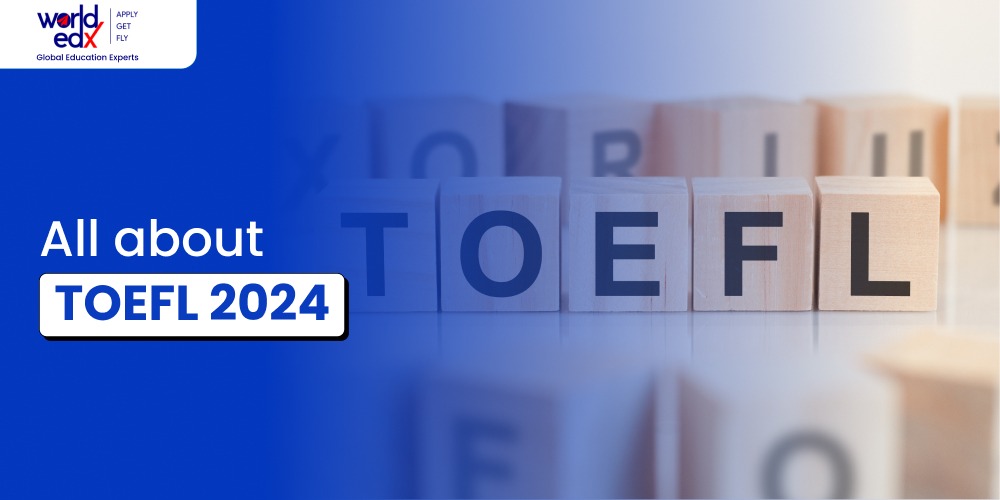TOEFL stands for the Test of English as a Foreign Language and is an internationally recognized standardised test designed to assess the English language proficiency of non-native English speakers. The test is primarily used for academic and admission purposes, particularly for individuals seeking to pursue higher education in English-speaking countries or for professionals aiming to work in environments where English is the primary language of communication. Widely accepted by over 12,500 universities and institutions across 160 countries, it is a gateway to academic success and professional opportunities worldwide. The TOEFL test is administered by the Educational Testing Service (ETS) and is widely accepted by universities, colleges and institutions around the world as a measure of an individual’s willingness to engage in English-language academic environments. TOEFL evaluates four key language skills: Reading, Listening, Speaking and Writing.
Variations of the TOEFL Test
Let’s explore the three test versions so you may select the one that closely matches your requirements:
TOEFL iBT (Internet-Based Test)
This is the most widely accepted version, offered in over 13,000 test centres worldwide. It’s a computer-based test with four sections: Reading, Listening, Speaking and Writing. The iBT focuses on academic English skills, assessing your ability to understand and use language in an academic setting. It’s ideal for students applying to universities, scholarship programs, or professional settings requiring strong academic language proficiency.
TOEFL iBT Home Edition
This version mirrors the iBT in content and structure, but you take it from the comfort and convenience of your own home. It requires a secure internet connection and specific equipment setup. It is similar to the iBT that focuses on academic English proficiency for university admissions and professional applications. The test is proctored remotely to ensure test security and various security measures are in place to monitor the testing environment.
TOEFL iBT Paper Edition
This is the traditional paper-and-pencil version, offered in some locations alongside the iBT. It features Reading, Listening, and Writing sections, with the Speaking section administered at home on a computer within three days of the paper test. The TOEFL iBT Paper Edition is less common than the TOEFL iBT and is generally offered in areas where internet-based testing is not possible.
It’s important for test-takers to carefully review the specific requirements and features of each TOEFL format to determine which option aligns best with their needs and circumstances.
Exam Sections
The TOEFL exam pattern comprises four main sections:
- Reading Section: This section evaluates the test-taker’s ability to understand and analyze written passages commonly found in academic texts.
- Listening Section: Test-takers are assessed on their ability to comprehend spoken English in academic and everyday contexts, including lectures and conversations.
- Speaking Section: This section measures the individual’s ability to express themselves verbally in English. Test-takers respond to prompts that assess their pronunciation, vocabulary and overall spoken communication skills.
- Writing Section: In this section, individuals are required to write essays and responses to prompts, demonstrating their ability to express ideas clearly and effectively in written English.
Eligibility Criteria
TOEFL, being an English proficiency test, generally does not have strict eligibility criteria in the traditional sense. Anyone is eligible to apply, irrespective of age, nationality or level of education. The test is primarily designed for individuals who are non-native English speakers and wish to demonstrate their proficiency in the English language, particularly for academic or professional purposes. Most test-takers opt to take TOEFL when they are planning to apply to universities or institutions that require proof of English proficiency. In such cases, the eligibility criteria are determined by the institution or organisation to which the individual is applying.
TOEFL Exam Fees 2024
| Particulars | Fees |
| Late registration | US$40 |
| Rescheduling | US$60 |
| Reinstatement of cancelled scores | US$20 |
| Additional score reports (per institution or agency) | US$25 each |
| Speaking or Writing Section score review | US$80 |
| Speaking and Writing Section score review | US$160 |
| Returned payment | US$30 |
TOEFL Exam Fee in India
| TOEFL iBT Test Fees | India Price (INR) |
| Registration for TOEFL iBT | ₹ 16,900 |
| Late Registration | ₹ 3,900 |
| Test Rescheduling | ₹ 5,900 |
| Reinstatement of Cancelled Scores | ₹ 1,990 |
| Additional Score Reports | ₹ 1,950 |
| Speaking or Writing Section Score Review: | ₹ 7,900 |
| Payment Return | ₹ 2,900 |
How to apply for the TOEFL exam?
The process of applying for the TOEFL exam is simple but following the instructions could help you have a successful and easy experience. Follow the below-mentioned steps for registration:
1) Create an ETS Account:
- Visit the official ETS website: https://www.ets.org/
- Go to “Create an Account” and fill out the required information.
- This account will be your gateway to registration, score reports, and future test bookings.
2) Choose Your Test Date and Location:
- The official ETS website provides a comprehensive list of test dates and locations: https://www.ets.org/toefl/test-takers/ibt/schedule.html
- Consider your academic goals, application deadlines and personal schedule when choosing a date.
3) Pay the Registration Fee:
- Pay the exam fee using a credit/debit card or other accepted payment methods.
- Note that fees may vary by country, so check the official website for the most accurate information.
4) Download and Print Your Confirmation:
- After successful registration, you will receive a confirmation email with your test date, location and other details.
- Save a copy for your records by printing it.
Which is easier TOEFL or IELTS?
The internationally recognized English language proficiency exams TOEFL and IELTS both have certain differences that may affect a test-taker’s opinion on difficulty. Here is a detailed comparison of TOEFL (Test of English as a Foreign Language) and IELTS (International English Language Testing System) across various factors:
| Basis | TOEFL | IELTS |
| Test Format | Computer-based (iBT) & Paper-based | Paper-based and Computer-based (Academic and General Training) |
| Sections | Reading, Listening, Speaking, Writing | Listening, Reading, Writing, Speaking |
| Scoring System | Scored on a scale of 0-120 | Scored on a scale of 0-9 for each section, with an overall band score |
| Test Duration | Approximately 3 hours | Approximately 2 hours and 45 minutes |
| Results | Available online within 10 days | Available online 13 days after the test |
| Acceptance | Widely accepted by universities and institutions worldwide | Accepted by universities, colleges and employers globally |
| Test Cost | Can vary, typically around $200-$300 | Can vary, typically around $215-$250 |
| Flexibility | Strict time limits on each section, fixed order of sections | Slightly more flexible timing, ability to choose between Academic and General Training modules |
Both TOEFL and IELTS are reputable English language proficiency tests and the choice between them depends on individual preferences, target institutions and test-takers’ comfort with specific formats. Ultimately, candidates should consider their strengths, weaknesses and the requirements of the institutions or organizations they are applying to when choosing between TOEFL and IELTS.
TOEFL is widely used by universities and colleges as part of the admissions process for international students. Many English-speaking countries, including the United States, Canada, the United Kingdom, Australia and others recognize TOEFL scores for visa applications and immigration purposes. Whether you are a student aspiring to study abroad or a professional aiming for international career prospects, the TOEFL serves as a reliable measure of your English language skills, promoting your journey towards success in an interconnected world.



